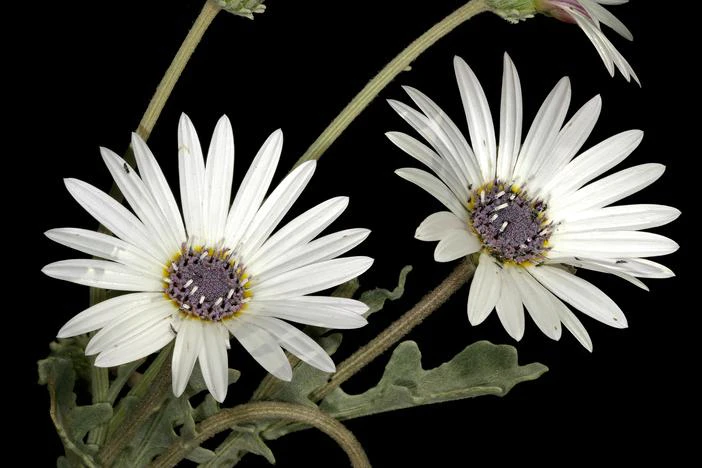Blue-Eyed African Daisy
(Arctotis venusta)
Blue-Eyed African Daisy (Arctotis venusta)
/
/

SAplants
CC BY-SA 4.0
Image By:
SAplants
Recorded By:
Copyright:
CC BY-SA 4.0
Copyright Notice:
Photo by: SAplants | License Type: CC BY-SA 4.0 | License URL: https://creativecommons.org/licenses/by-sa/4.0 | Uploader: SAplants | Publisher: Wikipedia Commons





















Estimated Native Range
Climate Requirements for Nakano, Japan
| This Plant | Your Site | Plant Suitability for Your Location | ||
|---|---|---|---|---|
| • Precipitation | 1" - 56" | 59" | Aquatic | Aquatic |
| • High Temp. | 67°F - 95°F | 87°F | Your summer temperatures are normal for this plant. | Excellent |
| • Low Temp. | 18°F - 50°F | 33°F | Your winter temperatures are normal for this plant | Excellent |
This plant may not grow well at your location - your precipitation is too high.
Summary
Arctotis venusta, commonly known as Blue-Eyed African Daisy, is an evergreen perennial herb originating from the arid and semi-arid regions of Southern Africa, particularly thriving in open areas and sandy soils. It typically forms a low mound about 12-18 inches (30-45 cm) in height and can spread up to 24 inches (60 cm) wide. The plant is characterized by its silvery-green foliage and showy flower heads that bloom mainly in spring and summer. The flowers are daisy-like, with creamy-white to pink or bronze ray florets that have lavender to reddish undersides, and a center of purple disc florets, creating a striking contrast.
Blue-Eyed African Daisy is valued for its drought tolerance and ability to provide vibrant color in low-water landscapes. It is often used as a ground cover, in rock gardens, and for erosion control due to its spreading habit and root system. While it is adaptable to many conditions, it thrives in full sun or part shade and prefers well-drained soils. Overwatering or poor drainage can lead to root rot. It is relatively low maintenance but may require deadheading to promote continuous blooming. In regions with mild winters, it can bloom year-round.CC BY-SA 4.0
Blue-Eyed African Daisy is valued for its drought tolerance and ability to provide vibrant color in low-water landscapes. It is often used as a ground cover, in rock gardens, and for erosion control due to its spreading habit and root system. While it is adaptable to many conditions, it thrives in full sun or part shade and prefers well-drained soils. Overwatering or poor drainage can lead to root rot. It is relatively low maintenance but may require deadheading to promote continuous blooming. In regions with mild winters, it can bloom year-round.CC BY-SA 4.0
Plant Description
- Plant Type: Herb
- Height: 0.5-2 feet
- Width: 1-2 feet
- Growth Rate: Moderate
- Flower Color: White
- Flowering Season: Summer
- Leaf Retention: Evergreen
Growth Requirements
- Sun: Full Sun, Part Shade
- Water: Medium
- Drainage: Fast
Common Uses
Bee Garden, Bird Garden, Butterfly Garden, Drought Tolerant, Erosion Control, Groundcover, Hummingbird Garden, Low Maintenance, Showy Flowers
Natural Habitat
Originating from arid and semi-arid regions of Southern Africa, particularly thriving in open areas and sandy soils
Other Names
Common Names: African Daisy, Silver Arctotis, Kusgousblom, Anmutiges Bärenohr, Silveröga
Scientific Names: Arctotis venusta
GBIF Accepted Name: Arctotis venusta Norl.